The Bellringing Picture
There was one ringing photo at Ledbury Station. It had a belltower window at the top and a Dublin to Rosslare train below.
There is a great deal of interest in ringing as this presentation shows.
Aspects of Ringing
A distant view of the Malvern Hills from Bosbury belltower.

And another view of Bosbury Tower before venturing inside.
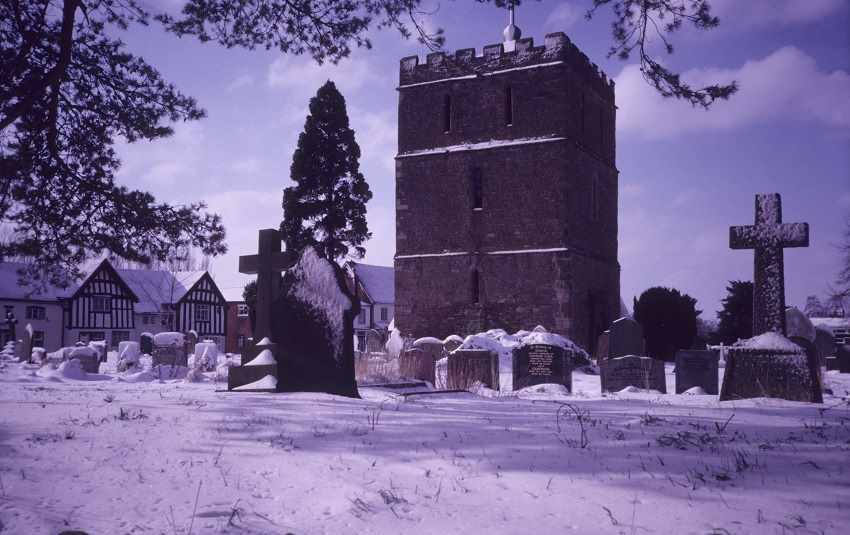
This is a six bell peal and, as is often the case, the bells are a tight fit in the tower.
These bells are in the "down" position. Bells cannot be rung like this.

Here are some smaller bells, Lydeard St. Lawrence.
These bells are "up" and ready for ringing.
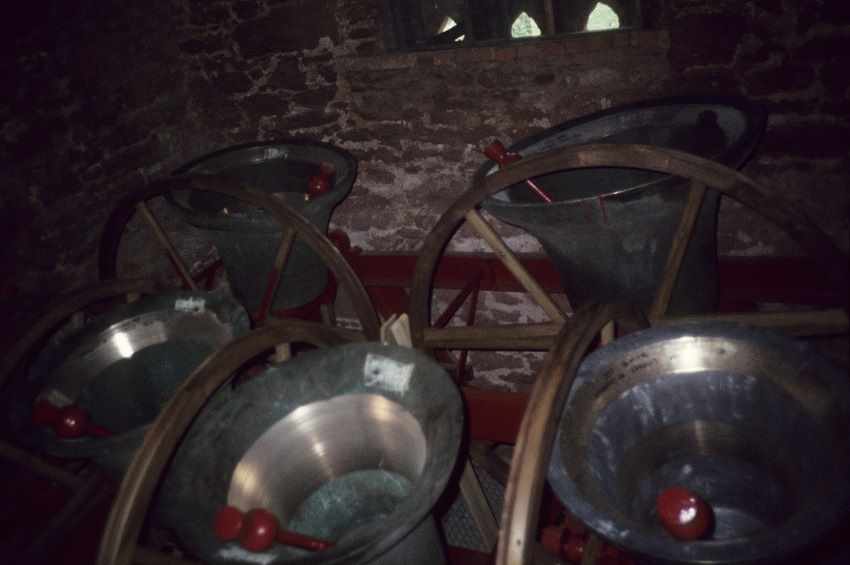
And here they are ringing. No two bells sound together and the key skill is
ringing your own bell a precise fraction of a second from the next.

Here is a tower with plenty of room, Llandinam.

And here we can get far enough back to see how the bells are rung.
The wooden "stay" on the nearest bell rests on the slider below when the bells are in the "up" position.

This is the position of a bell at handstroke with the woollen "sally" in the hands of the ringer.
This bell is going to revolve downwards through the vertical position when the rope is pulled and will end up facing to the right.

And this is the bell after this pull. It is at backstroke and some of the bellrope is now wrapped round the wheel
The ringer below will now be standing with arms held vertically.
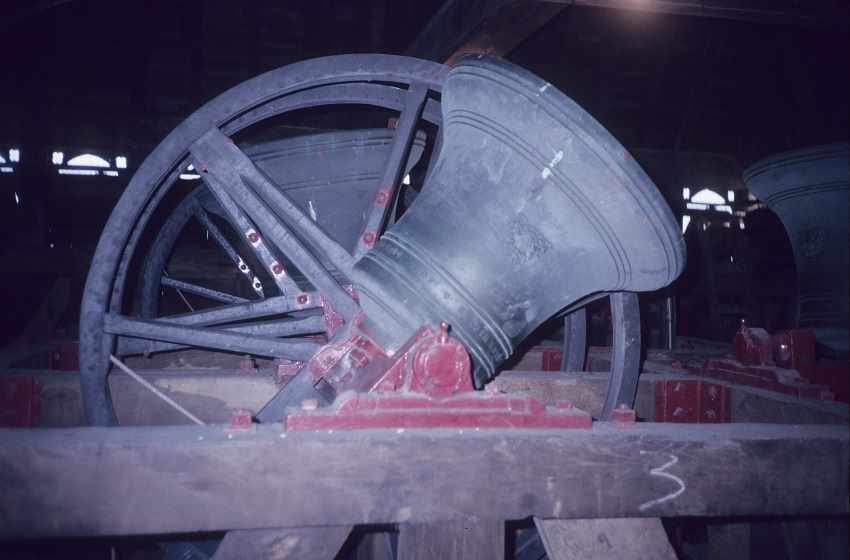
And this is the ringer in the ringing chamber.
This is the handstroke with the sally in the hands of the ringer.
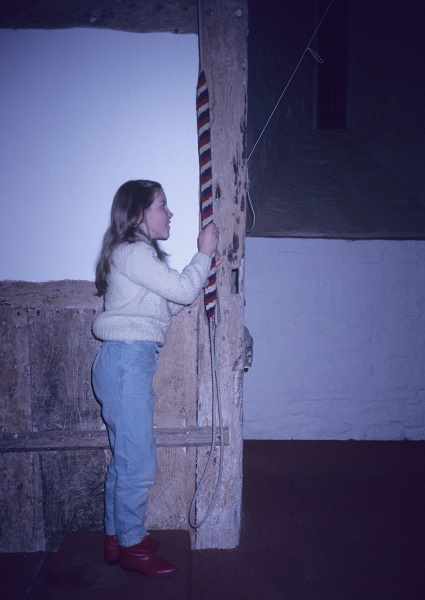
And this is the backstroke when some of the rope is wrapped around the wheel.

We now visit a bellfoundry, Taylor's bellfoundry in Loughborough.

And here are some bells to be, in the casting pit slowly cooling off.

The bell mould is in two parts, the outer moulds are being created here,
being covered with a loam mix that traditionally includes manure.

An impressively smooth finish eventually results, complete with inscription and decorations.

Both inner and outer moulds are then fired in a kiln before being carefully assembled and buried in the casting pit.

The pouring of the bell metal, 77% copper, 23% tin, has always been an important moment.

After casting a bell needs tuning and this is done by gradually removing metal until the desired pitch is reached.
The bells in the tuning shop here are a mixture of old and new.
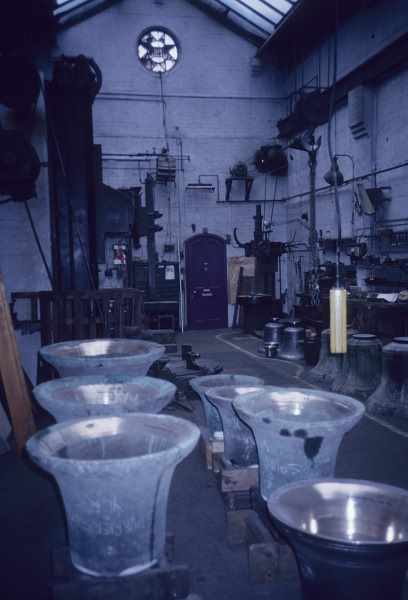
Foundry work involving older bells is complex and this mediaeval bell from Stoke Lacey now forms part of a restored ring of six.
The historic mediaeval fixing hoops, the canons, have been retained here and the bell has been quarter turned.

This is Ashperton church where a mediaeval installation has been neglected for many years.

The bells here were cast about 1410 and are secured on their headstocks by four rusting straps.

The bells can be dated from the the inscription band which includes two monarch's heads, those of Edward 3rd and Queen Phillpa.
Queen Philippa, with buns on her head, is just below the right hand strap.


And one final point here. Rust has a thickness and old rusting fixing straps eventually expand so much
they crack the bell they support as has almost certainly happened to the broken bell on the sill.

Bell restoration projects are expensive and one way of reducing costs is volunteer input.
Here a Buckinghamshire flint tower is being prepared to receive a replacement bellframe.

Now something on bellropes as a traditional rope is made to precision. There are 3 strands to a rope
and the rope being made here has 14 hemp threads to each strand. The first twists are then put in.

Sally wool is inserted next. With three strands in each rope it is easy to see how
traditional red, white and blue sallies are created here.

All three strands are then twisted together on the ropewalk and a new rope is formed.

All that then remains is the job of combing and trimming the sally.

Now for something really remarkable, a peal of bells without any ropes.
This is East Bergholt where work on the tower stopped in 1530 and was never restarted.
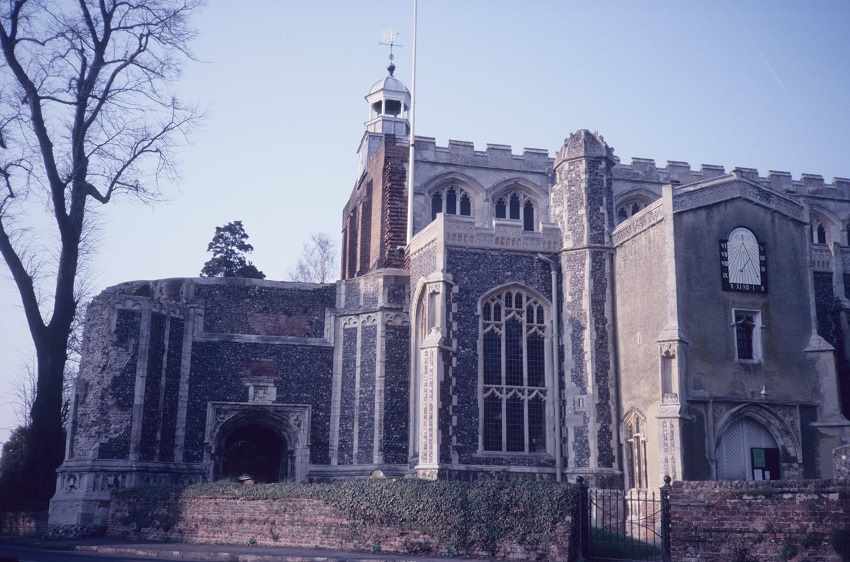
As a temporary measure a ringing cage was built in the churchyard in 1531 and is still in use!

This is the remarkable sight of the East Bergholt bells being rung.

Counterbalanced headstocks help as one reaches down into the pit for the eqivalent of handstroke.
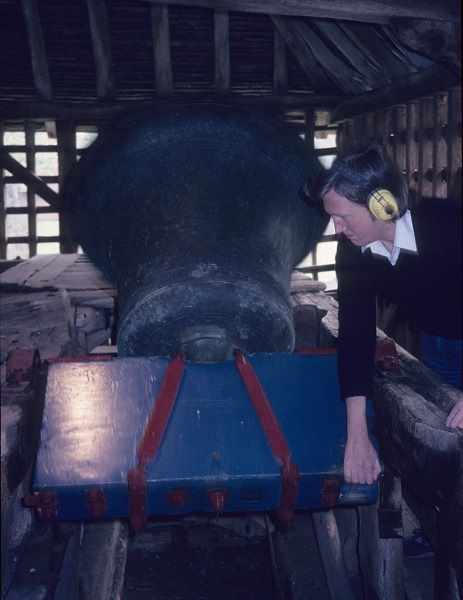
And then reaches the other way for the equivalent of backstroke.
These are heavy bells too, a 26cwt five, i.e. the heaviest bell weighs 26cwt.

And a slide on ringers' rules now as traditional rules are still commonly found in ringing chambers. This set is from Cradley.
The Glove, Spur or Hat rule, half way down, has passed into ringing folk law.

There is real variety and real camaraderie in ringing as the following slides on ringing tours illustrate.
The ringers here are visiting the Isle of Wight.

And there is plenty of interesting ringing on the Isle of Wight. This is Chale.

And this is Newchurch, where the tower sways with the bells, a not uncommon experience.
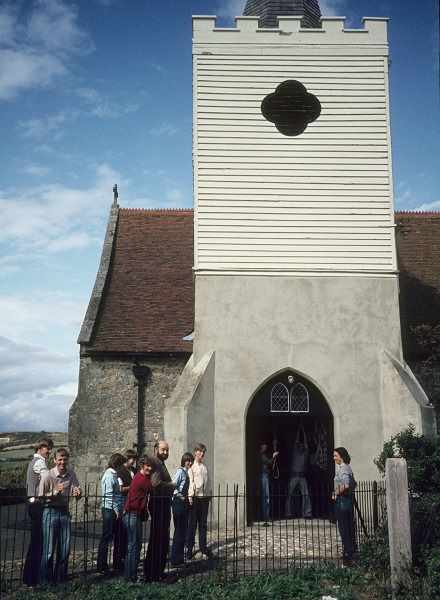
Cycling Tours are the best tours of all. This is Gwennap.

And this is Monksilver.

And this is a shortcut to Woodbury.

The ringing tour goes on!

The "lock-out" is a situation to be avoided on ringing tours. It is when a tower representative does not appear with the key
as has happened here at Cheddon Fitzpaine.

But in this instance a key is located and so the ringing tour goes on!
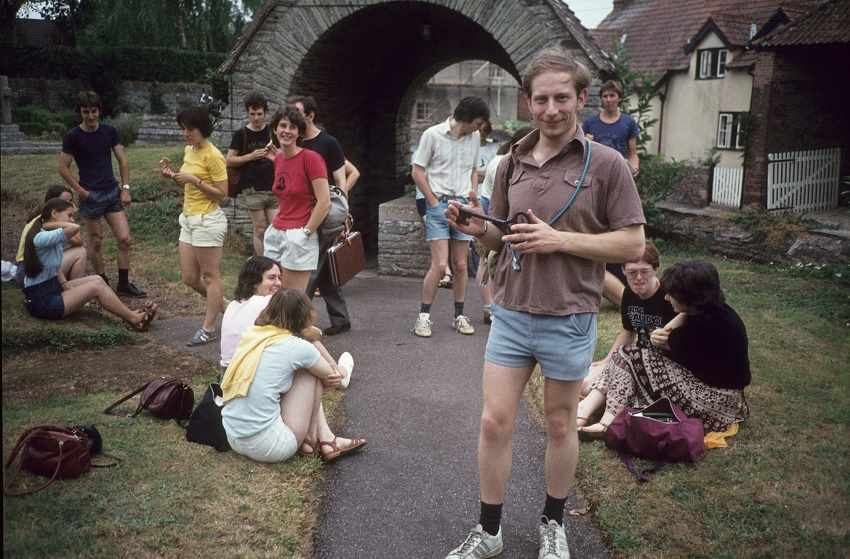
And a fine welcome at St. Ewe where cream teas are available for visiting ringers.

And a snowball for the photographer at Lyonshall on a snowy February visit.

The variety of ringing is for all weathers.
It is also for everybody.
If you would like to learn to ring
seek out your nearest practice night and you will be taught!
The End
The Ledbury Station Photo Gallery Home Page